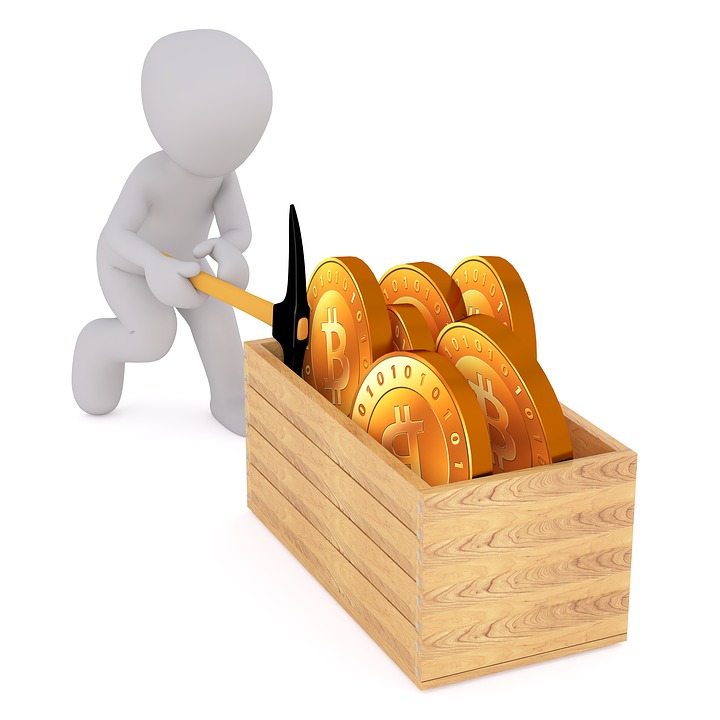
Oh Well… Bitcoin Miners Gamble on the Digital Currency Market
I remember growing up in a big house in Vancouver. Two stories plus a walk-out basement and lots of room for a young family grow up in. My Dad worked for TCA (now Air Canada) and in 1964 he was transferred to Edmonton to open a fledgling air-freight office. Of course, we had to sell the house in Vancouver and buy in Edmonton. I remember him telling me that they bought the Vancouver house for about $13,000 – and sold it less than 10 years later for $26,000. He thought he had won the lottery. Of course, Vancouver real estate really took off after we left, and we heard that the house and lot were sold about 20 years later for just over $1,000,000. Oh well …
Bitcoin has been in the news lately. It hit an astounding $20,000 per coin recently and early miners have been cashing in. One of our staff members was an early miner (some 6 or 7 years ago). He had amassed a substantial number of coins through his efforts. But he sold them off and got out of the Bitcoin mining game. Too bad; he sold his collection for about $2,000 – and at today’s market price they’d be worth more than a $1,000,000. Oh well again …
Karl Buckley, our Cyber Security Supervisor recently wrote about the nuts-and-bolts of Bitcoin. So just in case you want to speculate in this volatile market, here is his article (with some slight editorializing on my part). Karl wrote:
Why do you “mine” Coins?
The first thing you should understand is the idea of “mining” Crypto-currency (also known as Digital currency.) The reason it’s called mining is really very simple: The coins are a resource, just like oil, gold or diamonds. To obtain a resource, you need to do some work to get it. This work is generally called mining (in the real world.) The creators of these digital currencies needed to make them valuable. If you could simply conjure them into existence, there would be no value to them. So, they created a process to create/find new coins and called it “mining.”
What is “mining“?
Digital currency doesn’t exist in the physical world, so you don’t mine by moving earth or blasting holes in the ground. You mine it by solving complex mathematical problems. Solving these problems is difficult, even for a computer. Computer graphics’ cards are very good at performing these calculations and miners are buying them up because they are the most efficient devices for the job.
When you are “mining”, you need to consider how much energy you will use to mine a coin; electricity isn’t free.You should also consider the cost of the hardware. Just like a real-world mine, you have equipment expenditures and ongoing costs such as labour and maintenance.
What is a “Block Chain“?
It’s almost impossible to talk about digital currency and not talk about “Block Chain.” A Block Chain is simply a record of transactions. To give a real-world comparison let’s assume there was a Block Chain attached to all our real-world coins. If you had a Loonie, you could look at the Block Chain of every transaction it had been involved in – and who was involved. It would extend back to the point when it was originally minted. Bitcoin uses Block Chain, but some digital currencies use other algorithms; Monero for example. By design, a Block Chain very very difficult to alter, hence it’s Security appeal.
How many digital coins are potentially available?
That depends on the coin you’re talking about. Some Crypto-currency is designed to limit the number of available coins (Bitcoin). This mimics non-renewable resources in the real world (like oil or gold). Others don’t have any built-in coin limit (like trees). It all depends on how the currency has been designed to work.
How is the price of Crypto-currency determined?
Traditional stocks are influenced by supply and demand, the performance of the company, and natural occurrences. As Crypto-currency is less tangible, the price is more volatile and heavily influenced by supply-and-demand factors, such as speculative buying.
There are many variations of Crypto-currency; some have been designed for a specific purpose, such as:
- PotCoin – Developed to service the legalized pot industry in 2014.
- Sia – For the Sia Distributed Storage Network.
- AuroraCoin – An alternative to flat currency in Iceland.
- Tether – This is backed by the USD and linked to its value.
If you’re thinking of investing or mining, in-depth research is vital. The very nature of Crypto-currency means they act like cash; difficult to track and income generated from their value is non-taxable. Thus, you can expect governments to start implementing tight controls; some are banning them outright. That will impact their price and appeal. Some industry pundits have predicted that the value of Crytpo-currency will eventually be driven to ZERO. That appears to be extreme, but the message is clear; investing when the Crytpo-currency market is high is very risky.
Malware that hijacks your computers to mine various coins has been on the increase recently. This has lead to some speculation that it will become the next-big-thing in Malware as the returns are more attractive than Ransomware. That’s a topic for another day.
If you have any questions about Crypto-currency, you can always reach out to your TRINUS Account Manager for some stress-free IT.
Thanks Karl! Now, if I had only kept my child-hood collection of baseball cards, they’d be worth a fortune. Oh well…
Dave White
TRINUS
stress-free IT
trinustech.com

















